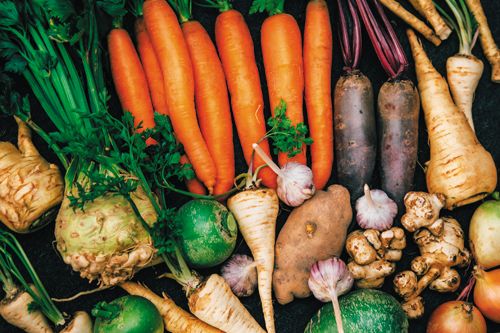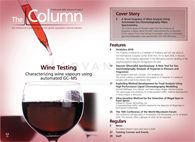Detecting Emerging Pollutants in Leafy and Root Vegetables
Researchers from the University of Seville have developed a method for the determination of pollutants in leafy and root vegetables using UAE, d-SPE, and LC–MS/MS.
Photo Credit: ulrich22/Shutterstock.com

Researchers from the University of Seville have developed a method for the determination of pollutants in leafy and root vegetables using ultrasound-assisted extraction (UAE), dispersive solid-phase extraction (d-SPE), and liquid chromatography tandem mass spectrometry (LC–MS/MS) (1).
In many arid and semiarid regions, the mass irrigation of soil with reclaimed wastewater or modifying the soil with sewage sludge is a common method of recycling water and utilizing organic matter that would otherwise go to waste. However, wastewater treatments are not specifically designed to remove emerging pollutants and this can lead to the accumulation of pollutants in the soil. Pollutants can then make their way into plants, affecting crops and constituting potential health risks in edible plants. Pollutants with endocrine-disrupting properties are particularly worrying because they can cause reproductive damage, cancer, and metabolic disorders (2,3).
Currently, research on emerging pollutants has primarily focused on pharmaceuticals and other personal care products with too few focusing on emerging pollutants from other sources, such as household and industrial chemicals (1). Researchers aimed to develop a multiresidue analytical method for the determination of a wide group of emerging pollutants (35 compounds from eight groups) in leafy and root vegetables. Compounds were selected based on their environmental persistence, bioaccumulation, toxicity, relevance in treated wastewater or sewage sludge, and endocrineâdisrupting properties. Using UAE, d-SPE, and LC–MS/MS researchers investigated three leafy vegetables (lettuce, spinach, and chard) and three root vegetables (carrots, turnips, and potatoes).
The developed method proved to be sensitive and accurate at determining household and industrial chemicals, such as per-fluoroalkyl compounds, nonionic surfactants, anionic surfactants, and plasticizers. The method also detected personal care products, such as biocides and UV(0) filters, and hormones. Researchers believe the method could constitute a useful tool to evaluate emerging pollutant uptake and their bioaccumulation, and could be used to estimate daily intake of pollutants from consumption of vegetables. - L.B.
References
- I. Aparicio et al., J. Chromatogr. A1533, 49–56 (2018).
- E.R. Kabir, M.S. Rahman, and I. Rahman, Toxicol. Pharmacol. 40, 241–258 (2015).
- M. Giulivo, M. Lopez de Alda, and D. Barceló, Environ. Res. 151, 251–254 (2016).

New Method Explored for the Detection of CECs in Crops Irrigated with Contaminated Water
April 30th 2025This new study presents a validated QuEChERS–LC-MS/MS method for detecting eight persistent, mobile, and toxic substances in escarole, tomatoes, and tomato leaves irrigated with contaminated water.

.png&w=3840&q=75)

.png&w=3840&q=75)



.png&w=3840&q=75)



.png&w=3840&q=75)












